Online gradebooks empower both teachers and students with real-time insights into academic performance while also offering better overall transparency, increased accountability for students, ease of use, and other benefits. With just a few clicks, parents, students, and educators can access up-to-date grades, assignments, and feedback, fostering an environment of continuous communication and collaboration. Perhaps it’s not surprising that one survey found 90% of teachers think online grading tools improve relationships with both students and parents.
This streamlined grading process reduces the administrative burden for teachers, allowing them to dedicate more time to educational planning and student engagement. And for students, the ability to access assignments, deadlines, and feedback in one centralized space minimizes confusion and helps improve organization.
As a longtime eLearning professional who’s tested countless programs, I’ve reviewed and ranked the best gradebook software applications available today based on a number of factors, including ease of use, features, cost, and more (click here to learn about our entire Editorial Process & Methodology for product reviews). This guide has been fully updated for 2024 to provide you with the best current options available right now.
What are the Best Online Gradebooks for Teachers?
1. Thinkwave
Thinkwave is a free online gradebook for teachers to keep track of student grades and report progress to parents. For a free option, it has a number of great features that make it one of the best gradebook software programs out there.
I’ve found ThinkWave to be an exceptionally useful online gradebook for teachers. Its comprehensive set of features addresses a lot of the different challenges faced in the classroom, making it an incredibly useful tool for educators striving to enhance their teaching methods and streamline administrative tasks.
One of the great features of ThinkWave is its ability to distribute and collect assignments online. This functionality is crucial for distance learning environments, where traditional paper-based assignments are impractical.
The ability to upload assignments and handouts online not only saves on paper and toner cartridges but also organizes course materials in one accessible location.
This feature alone significantly reduces the time educators spend managing course materials, allowing me to focus more on creating engaging content.
ThinkWave’s advanced messaging and automatic mass email capabilities facilitate seamless communication with students and parents. This is particularly important for maintaining transparency and keeping all stakeholders informed about student progress and upcoming assignments.
The platform’s intuitive interface ensures that messages reach the intended recipients efficiently, whether targeting individual students, specific classes, or the entire student body.
The online portal for students and parents is another feature I want to point out. It provides a detailed, day-to-day summary of student progress, including graded assignments and upcoming assignments. This level of access promotes student accountability and allows parents to be actively involved in their child’s education.
Features
- Clear interface. ThinkWave Educator 3.0 comes with an easy-to-use interface that requires no extra training. Multiple classes are managed within a single gradebook, so you don’t have to switch back and forth when navigating.
- Flexible grading options. Teachers are free to use standard points-based grading or opt for letter grades, checks and other custom grading scenarios. Thinkwave also supports assignment weighting and the ability to create custom assignment types.
- Granular reporting. ThinkWave Educator generates streamlined, ready-to-print PDF reports. Reports can be branded with an image logo, header and other bells and whistles, if required.
- Upload content online. ThinkWave allows you to upload homework and handouts on the web (up to 25MB per file). The premium plan includes 100 GB of online storage.
- Collecting homework online. Likewise, students have an opportunity to upload their homework online so the files become immediately available for the teacher’s review.
- Access to grades for students and parents. Personal password-protected accounts enable students and parents to access classroom information. Daily progress summary involves overall performance, graded assignments and upcoming tasks for each student’s assignments.
- Classroom blog. ThinkWave features a built-in blog. Students, teachers and parents can exchange postings and news aimed at particular groups or the general school audience.
Pros
- A multitude of reporting criteria and data display styles
- Online distribution and collection of assignments
- Collaboration and communication tools
- Bulk student import using .csv files
- Customizable reports.
Cons
- Instructors outside the US may have issues adjusting the solution to their needs
- You can’t add students to the database in bulk, just one at a time. A CSV upload option would be nice.
The basic version of the software is free. A premium license available at $49.95 per year entitles you to technical support and 100 GB of storage space. Aside from the online gradebook for teachers, ThinkWave develops cloud-based school administration software. Feel free to sign up for a 30-day trial and make up your mind.
2. JumpRope
JumpRope is a free-of-charge web-based platform that helps educators embrace standards-based grading, convenient assessment, and quick feedback.
I’ve found JumpRope to be a really innovative platform that truly transforms the way learning progress is tracked and communicated.
JumpRope’s approach to grading is very modern, focusing on standards-based assessments that offer a more nuanced view of student achievement than traditional grading systems. This gives teachers the ability to provide actionable feedback, tailored to each learner’s needs, creating a classroom environment where instruction is differentiated and students are motivated to master the skills and habits essential for success.
One of the most compelling aspects of JumpRope is its ability to make learning progress tangible and visible.
The platform allows for real-time feedback and a comprehensive overview of overall progress, moving beyond simplistic grades to a more meaningful assessment of student work.
By mapping assignments to specific standards and assessing them accordingly, JumpRope changes the narrative from merely completing work to excelling in it.
This enhances the learning experience while also helping create a culture of excellence and continuous improvement.
For teachers, JumpRope is so incredibly useful. The platform simplifies the process of tracking grades and student progress, significantly reducing administrative burdens and freeing up time for more impactful teaching activities.
The visual reports generated by JumpRope make it easy for students and parents to stay informed about academic progress. This transparency helps you build a collaborative learning environment where parents can effectively support their children’s education.
Features
- Standards-based electronic gradebook. All scores and reports in JumpRope are aligned with a standard or learning goal, rather than based on formal assignment completion.
- Intuitive look and feel. The interface is clean and easy to navigate with familiar visual content to estimate student progress in real time.
- Elaborate reporting. JumpRope generates multiple types of reports – from a basic report card to a formative outline focusing on standards and perspectives.
- Assessments based on multiple scores. Like other online grading programs, JumpRope introduces various evaluation criteria so the teacher can get a better picture of one’s performance. For every assessment, you can enter more than one score, collect information and provide more accurate feedback.
- Customizable grades. The teacher can play with various assessment values, such as percentages, rubric scale, or more complex indicators such as meeting or exceeding certain indicators.
Pros
- Informative tutorials on creating classes and standards
- Nice look and feel, neat layout and clear overview of evolving grades
- Good attendance section to ensure easy tracking.
Cons
- The site runs on Adobe Flash, which means it’s not supported by major tablets. JumpRope offers a native app for download but it only covers the administrative part of the solution.
- JumpRope allows no student/parent access and falls behind on collaboration features offered by the competition
- The grading policy is standards-based by default, and there is no way you can switch to regular grades.
JumpRope offers solutions for instructors, schools and districts. Whereas it’s free for teachers, institutions pay their fees for product use and maintenance.
3. Schoology
PowerSchool Schoology is a globally acknowledged LMS and social network. Having a somewhat Facebook-ish interface, Schoology is intuitively navigable and intelligible. Technology-wise, the solution includes pretty much everything the e-Learning industry has to offer: collaborative blended learning, content development and distribution, grading, attendance record collection, and more to cut down on administrative tasks.
Schoology offers a clean interface for grading and annotation of student work. The grading tool allows teachers to access students’ papers, switch between different versions and submissions, provide textual or video response, and store grades in the system.
As with all major electronic gradebooks, score updates are performed instantly and automatically. Students and parents can easily gain access to a Schoology class, i.e. self-enroll, by entering an access code. Once they are in, the results are readily available for review.
The course analytics and mastery reports measure learners’ overall progress against standards (Common Core, NGSS, etc.) or predefined learning goals.
Check out our favorite Schoology tips for teachers to learn how to get the most from this tool.
Features
Needless to say, Schoology is not just one of many free gradebooks for teachers but an all-around learning framework, including:
- Instructor tools. Standards-compliant course creation and management features as well as all-round analytics.
- International learning community. An impressive database of resources, best practices and guidelines from skilled instructors from all over the world. Schoology’s Resource Center and Groups allow educators to communicate with peers and share professional experiences.
- Detailed analytics. Performance-based analytics provide insights into overall class progress and possible ways of improvement.
- Mobile support. Schoology offers native mobile apps that replicate the functionality of the web-based versions.
Pros
- Online circulation and collection of assignments
- Embedded attendance tracker
- Unlike some competitors, Schoology caters to a wider geography and incudes customization options for schools outside the US and Canada
Cons
- Students need to self-enroll so teachers can keep track of their performance. This may cause certain hiccups before the process gets on the right track.
K12 and higher ed aside, Schoology also targets big corporate clients. The paid enterprise package enables web-conferencing, unlimited data storage, and other nifty Pro features. Feel free to contact Schoology for a quote.
4. TeacherPlus by Rediker
TeacherPlus Web Gradebook by Rediker is another paid online gradebook designed for schools using Rediker’s AdminPlus SIS.
Teachers are free to access their gradebooks any time from a large number of supported devices. TeacherPlus offers native iPad and Android apps for seamless mobile operations.
I like TeacherPlus Gradebook for its seamless integration and user-friendly interface. Designed to work neatly with the AdminPlus student information system, this online gradebook is a good example of how technology can improve the educational experience without adding complexity.
The foundation of TeacherPlus Gradebook is its advanced HTML5 framework, ensuring that it’s accessible across various browsers without the need for additional plug-ins.
This level of compatibility, coupled with responsive design, means that whether I’m on my laptop or accessing the gradebook via iOS or Android apps, the experience is consistently smooth.
This flexibility is invaluable, especially when updates or grading needs to be done on the fly.
What sets TeacherPlus apart is its comprehensive approach to meeting the diverse needs of educational institutions. Whether it’s elementary schools that require easy entry of skills and standards, or middle and high schools that benefit from weighted grades and automatic calculations, TeacherPlus Gradebook adapts to the specific requirements of each educational level.
The real-time dashboards and graphs provide an instant overview of student performance and attendance which can help promote a more proactive approach to education.
I believe the integration with AdminPlus and the ability to access and view IEPs directly within TeacherPlus are game-changers. These features ensure that data flows seamlessly between the classroom and the central office, enhancing communication and efficiency.
Additionally, the ParentPlus web portal is an important feature I want to highlight as it allows grades to be shared with parents in real time, fostering transparency and engagement in the student’s educational journey.
Features
- Caters to elementary, middle and high schools
- Real-time dashboards, clear view of each student’s performance
- Weighted scores and automatic calculations
- Grades are available to parents online through the ParentPlus portal
- Intuitive interface, convenient filters, batch options
- Versatile reports, including progress layout, average indicators, birthday lists, etc.
- IEP Direct Interface that allows teachers to view individual education plans right in TeacherPlus Gradebook (for an extra fee)
- Attendance tracking and reporting by day/week/month, etc.
- Gradebook Management Site – a single location where administrators can manage, customize and analyze all gradebooks at the institution level.
Pros
- Easy to learn for new instructors, no steep learning curve
- Optimized user experience, smart interface
- Granular reports based on a wealth of criteria.
Cons
- Some users have reported performance issues when entering grades
- Limited views so just a few students remain in focus
- Limited availability of mass operations/global changes
- Works with proprietary AdminPlus Student Information System only.
TeacherPlus comes as a free add-on, yet Administrator Plus pricing may range widely based on the particular school and plan. Check with Rediker and see if you are on the same page.
5. Alma
Alma is all-in-one cloud software that boasts to streamline the whole learning process from grade reporting to lesson planning and school-wide communication. Basically, a SIS and LMS rolled into one.
Like other reviewed solutions, the Alma online gradebook can calculate grades based on teacher-defined weights. Instructors can enter grades as scores or percentages, or use a grading scale.
This standards-based electronic gradebook enables teachers to gauge students’ mastery, track their progress on specific subjects, and monitor overall performance throughout the course.
Pros
- Cloud-based, no software installation required
- Supports traditional and progressive practices
- Nice collaboration tools, easy communication between all stakeholders
- Full interoperability with Google Classroom
Cons
- You have to additionally request a demo and quote.
The Alma pricing plans include three-tiered packages for Individual Schools and tailored pricing for Districts. The quote would depend on institution size and required modules.
6. Jupiter Ed
Jupiter is a comprehensive cloud-hosted product focused on improving students’ academic accomplishments and operating K-12 and higher education institutions more efficiently. The software allows you to assess students online, review results, track progress in real time, and communicate information to parents and other stakeholders.
The online gradebook software module enables the teacher to record standards-based assessments, manage attendance and maintain behavior logs, as well as grade assignments based on rubrics.
Students and parents have access to the system with the rights to check grades, submit homework, download content and receive announcements.
Jupiter iO channels data through its proprietary SIS (student information system) and integrates easily with third-party solutions to sync up students, courses, personnel, etc.
Features
- Create your own rubric charts and share with peers
- Customizable letter/numeric grades
- Scores marked as points, percentages, rubrics or even adjustments
- Assignment weighting
- Multiple insights into performance fluctuations (grades lowering/raising stats, etc.)
- Different grade configurations for different classes, etc.
Pros
- Easy access for students and parents
- Online submission of homework
- Nifty mark-up of writing assignments
- Grades monitoring with the capability of quick intervention.
Cons
- It’s not easy to switch from standards-based to regular grades
- Cloud storage may be an issue for security-concerned schools.
The Jupiter software is available in two editions: Single-User ($120/year per user) and Schools (custom pricing).
7. GradeBookWizard
GradeBookWizard is another feature-packed online gradebook and attendance control solution for teachers. Same as with other products in this domain, educators can use GradeBookWizard to release instructions, assignments, grades, news, handouts and information for parents. All these can be accessed via secure logins.
At the institution level, GradeBookWizard enables standardization of grading criteria across classes. Student records are stored in a centralized location, so any changes are applied automatically to the entire database. Grades can be exported in various file formats for better compatibility.
Features
In a nutshell, Gradebookwizard offers the following functionality:
- Entirely web-based, no software installation required
- Secure login and authentication for all user groups
- Tabular-format grading, resembling the familiar paper-based gradebook
- Simultaneous grading of several homework assignments
- Full support for rubrics; scales and rubrics can be shared with other educators
- Personal grades can be published for students and parents to review.
Pros
- 30-day free trial and moderate pricing
- Convenient student and parent access to track performance
- Easy exporting of data for offline reporting
- Handy attendance record and behavior logs.
Cons
- Slightly awkward look and feel
- Some users have reported performance issues.
License costs start at $4.95 per month/teacher or $49 per year/teacher. Significant discounts apply to school-wide subscriptions.
8. Markbook®
Markbook is available in two versions. There is a paid offline version for Windows. There is also a cloud-based version that works with both Windows and macOS, which is available on an annual subscription basis.
Features
- Supports multiple communication formats. Teachers can communicate with students using hard copies, email, and send reports directly to smart devices using the CONNECT feature.
- Easy to create individual and class reports. Teachers can track and analyze student performance over time and select from multiple calculation methods.
- Allows flexible weighting. Teachers can use flexible weighting to enable more helpful evaluation and create a better projection of student success.
- Creates seating charts. Teachers can easily create seating charts with photos and the analysis of recorded attendance.
- Import class rosters. Class rosters can be imported from certain other school information systems (SIS).
Pros
- Teachers can use professional judgment to adjust final grades as needed.
- The cloud version is flexible and easy to use.
- Works well for elementary schools, middle schools, high schools, and international baccalaureate programs.
Cons
- The software license for both the PC version and the cloud-based version expires after a year and must be renewed annually for continued use.
- MarkBook® (PC version) and MarkBook® (cloud-based version) use data formats that are not compatible with each other. To move data between the two versions, a teacher needs to use the EXCHANGE feature.
- The cloud-based MarkBook® version does not display well on smaller smart devices that are eight inches. For the iPad, only the 12.9 inches Pro model has enough resolution to display the cloud-based MarkBook® version properly.
MarkBook® has a paid version that starts at $39.95.
9. Planbook.com
Planbook.com offers a comprehensive web-based system, on an annual subscription basis, which includes a Planbook and a Gradebook with administrator tools, teacher tools, and student tools.
Features
- Flexible class schedules. This system supports, weekly, two-week, A/B, and cyclical schedules, so that teacher can create gradebooks and schedule classes by the quarter, the semester, or by the year.
- Customized lessons. Lessons may have up to ten unique sections and a teacher can define weighted categories for assignments and assessments.
- Standards implementation. Standards are available for all 50 states. There are 75 national versions with 100 districts/dioceses and international frameworks.
- Online access.Administrators can view teachers’ plans online. Students can view lesson plans, upcoming assignments, and their performance online.
- Improved communication. Administrators can provide feedback to teachers. Students can communicate with teachers more easily and access links provided by their teachers to media and files.
Pros
- The system is very modestly priced for all the features it offers.
- Discounts are available for multiple teachers.
- Mobile app versions are available for Android systems and iOS.
Cons
- This system focuses on function more than being aesthetically appealing. It has a simple user interface.
- Software upgrades may cause problems with the mobile app versions.
- Requires an online connection to use the web-based system.
Planbook.com is very popular. This system offers a no-cost, no-obligation, free 30-day trial, which makes it very easy to try the system. Paid plans start at $15 a year. Quick setup, in just a few minutes, is possible using the included standards as needed for a particular state.
10. TeacherEase™
TeacherEase is gradebook software designed to support the virtual classroom. Common Goal Systems Inc. created the program. A single teacher, a school, or an entire school district can use it.
Features
- Web-based gradebook. Teachers save time by using the web-based gradebook when grading students.
- Improved student performance. Teachers can more easily communicate with students, provide feedback, and inform parents about a student’s progress. Parents are encouraged to check assignments, review grades, monitor class progress, and review attendance. Parents can login to the system to do this, using any Internet connection. This improves student performance because active parental participation encourages students.
- Supports traditional and standards-based grading systems. In addition to offering traditional grades, it is possible to align assignments to meet district or state standards. Then, use standards-based grades to evaluate student performance.
- Enables a standards-based classroom. This web-based, learning management system offers integrated learning targets, rubrics, curriculum mapping, lesson plans, assessments, and report cards.
- Centralized gradebook storage. Having a centralized gradebook system allows administrators to run reports that help identify students who are struggling and those who would benefit from having extra help.
Pros
- Offers school or district-wide pricing with free accounts for individual teachers.
- This web-based system does not require any software to download, install, or maintain.
- Administrators can easily send announcements to the entire school or district.
Cons
- Requires an Internet connection for use and occasionally the online system can lag or go down.
- Course setup is cumbersome and creating customized reports is challenging.
- Customer service needs improvement.
TeacherEase™ works with standard HTML-based web pages Users can log on from anywhere that has an Internet connection. The software design works well, even with older computers and slow Internet connections. Users can log on with a Mac, PC, or a UNIX system from a desktop computer, laptop, terminal, or tablet or use a web browser on any smart device. Individual teachers and software system evaluators can sign up for a free account to learn how the system works.
A Final Word on Online Gradebooks for Teachers
I hope this list of free and paid online grading programs was helpful.
The products above are all different: some are standalone online gradebooks for teachers, others are e-Learning suites that cover most aspects of the education process, including content authoring and learning management.
And remember, there’s no such thing as a one-size-fits-all solution here. What works in one learning environment might not be a good fit in another.
Define your goals and budget, and go for a product that supports your local standards and, ultimately, makes your life easier.
Wright hen you choose the right gradebook tool, you can save time grading assignments and increase the accuracy of your results.
So don’t hesitate to explore the options above and find an online gradebook solution that works best for you!
Have any questions about this guide to the best grading software for teachers? Let us know by commenting below.
- Elevating Your Virtual Presence: Why EMEET’s SmartCam S800 Stands Out in Modern Communication - 06/04/2025
- US Teachers Will Spend $3.35 Billion of Their Own Money on Classroom Expenses in 2025-25 School Year - 06/04/2025
- Report: Leveraging AI Tools Could Help US Teachers Avoid $43.4 Billion of Unpaid Overtime Work - 06/04/2025

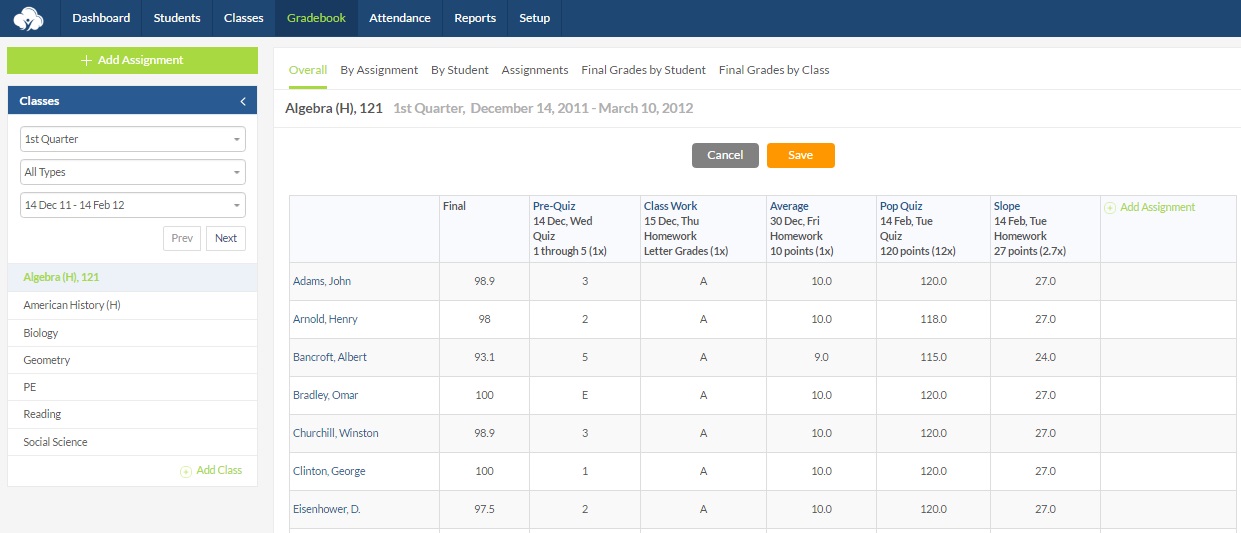
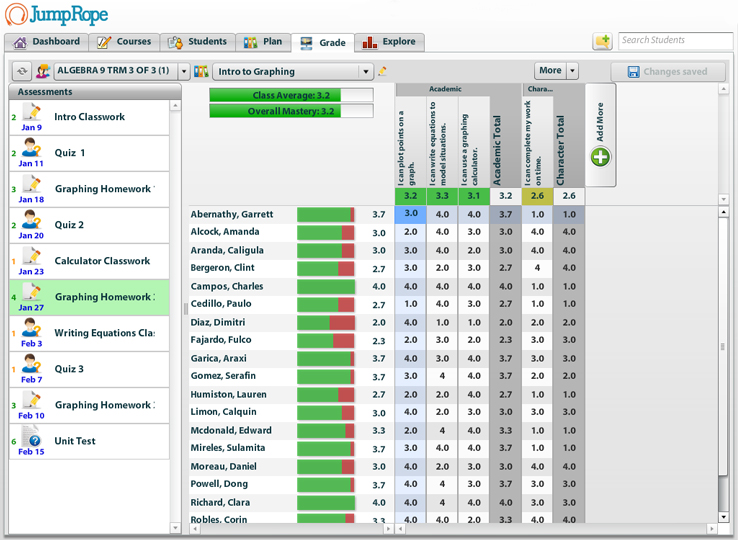



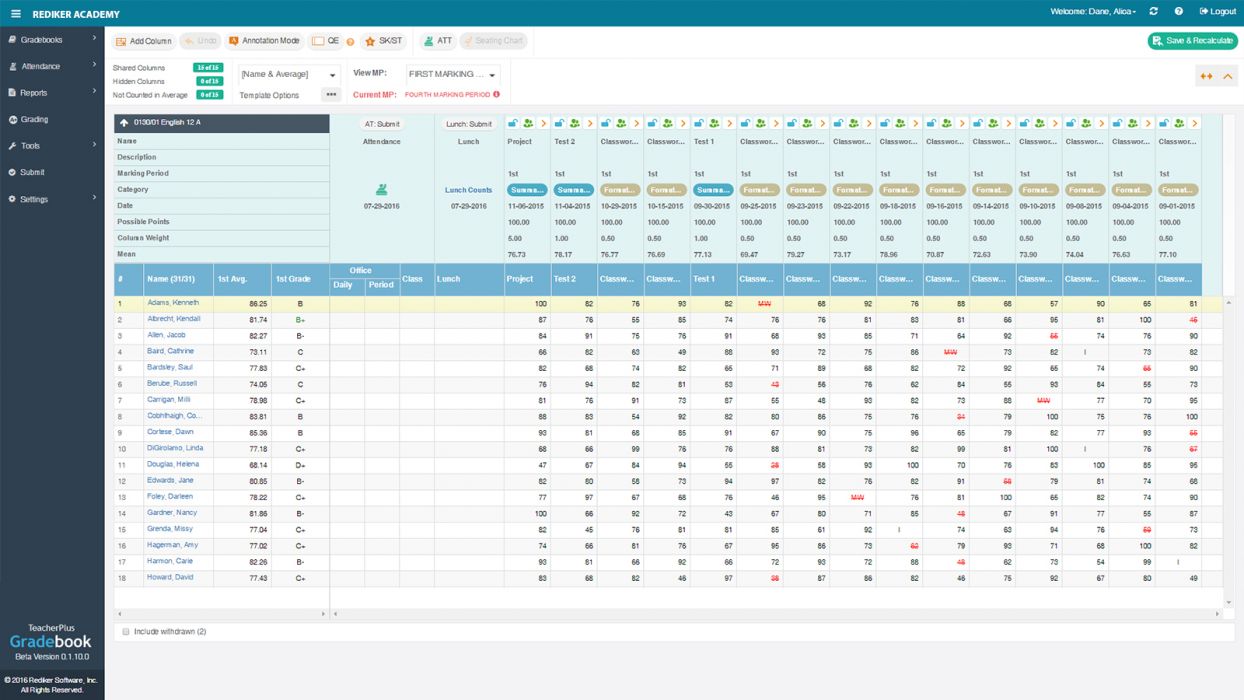
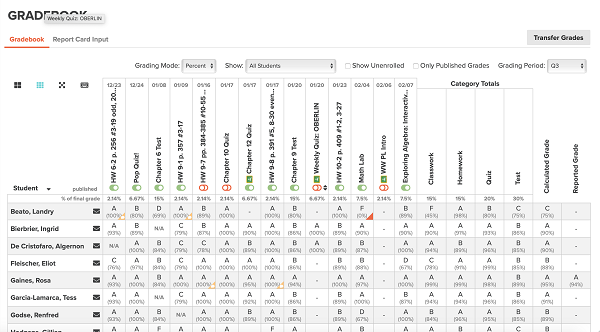

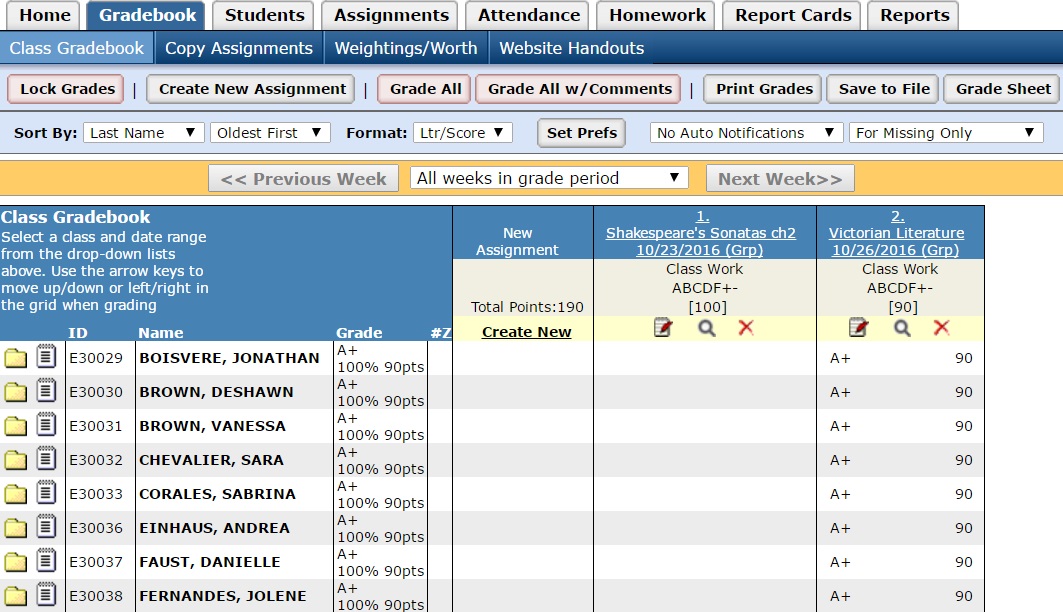
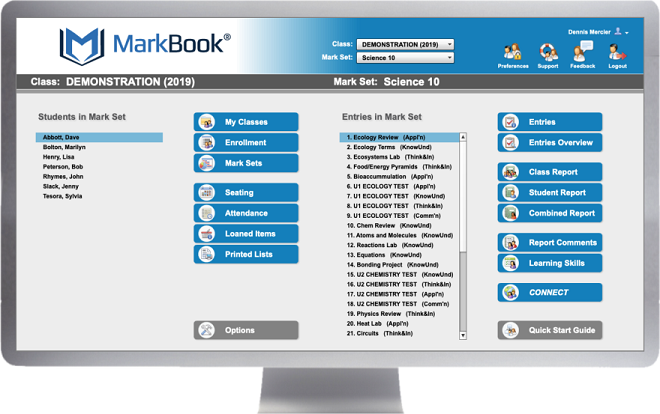
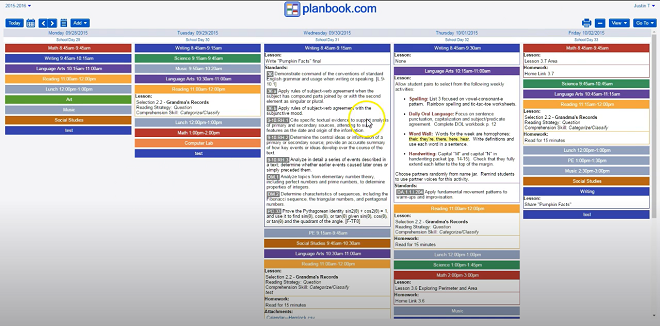
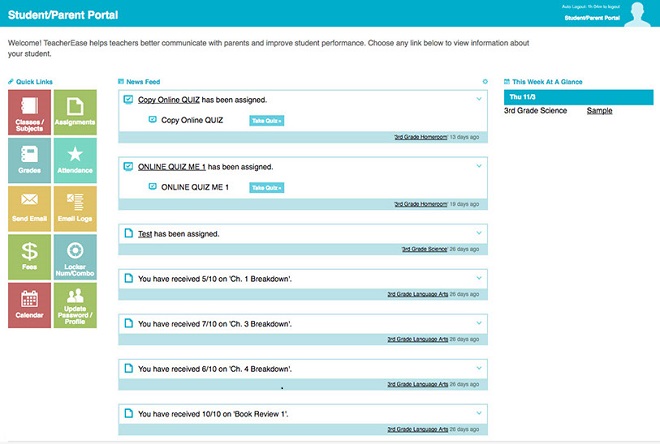
Engrade is going away. We switched to and paid for Engrade PRO. It was a huge mistake. PRO has no grade card templates. Teachers thought it was just like Engrade, it’s not. Had to import all data again, nothing carried over. Not happy.
Hi Bill, yes, I heard people reporting the same issue. I believe you should get in touch with their tech support and they’ll guide you through the transition process. Sadly, it’s not that intuitive when performed on the user side, and it’s a real drawback. Another thing I noticed about Engrade is that they no longer accept orders for custom report cards for schools. Used to be a great option…
how much was engrade pro? I tried using all other gradebooks, and it just doesn’t seem to do what engrade does.
Used Engrade for years and loved everything about it. Was very disappointed that when it went to a for purchase status that there wasn’t an option for individual teacher subscriptions. I would have paid to continue.
Am using LearnBoost now. Find it a bit more difficult to get around, but like it when I figure it out. Having a lot of technical issues with it, however, so may have to try something else.
Hate to have to keep changing.
Hi SF,
I just started using LearnBoost today, and noticed that it didn’t have the option to for us to categorize the assignments by subject, which engrade (the free version) does a fabulous job on. I’m on the same boat as you, with having to figure out a whole new grading system… Please let me know of any good ones when you get the chance…
Alma is not intuitive, not user friendly, requires a huge amount of mouse clicks to input grades, and is not customizable by the teachers. Steer clear.
Currently using Alma this school year – and our staff has found it extremely frustrating, as well as time consuming to use. As already stated – many “clicks” to enter a grade. Also not being able to see complete class on a screen makes it hard for me to see the “big” picture. Reports have to be generated, then formatted – not teacher friendly. It is “paired” with Google classroom, which for some disciplines is handy.
Have also use the Jupiter program. It is hands down more teacher-friendly than Alma.
Learnboost is one of the easiest and more intuitive of the free grade books. Sadly, it does not show students their overall average. I see it, but students can not access this information.
I, too, was a long-time Engrade devotee. Greed has destroyed that program. Individual teachers would be happy to pay a fee to continue using the gradebook, but McGraw-Hill has other bigger fish in sight.